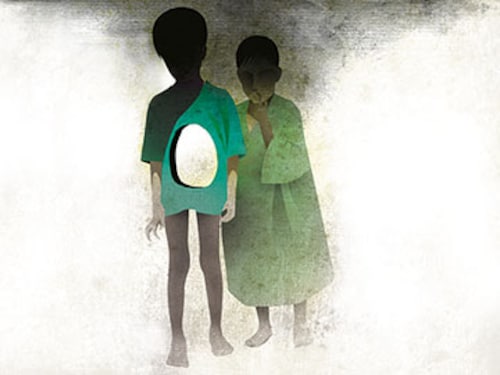The World's Hunger Pangs
A look at the level of food security in different countries


The Global Hunger Index (GHI) reveals the level of food security in different countries. The 2012 GHI shows that 20 countries are facing ‘alarming’ and ‘extremely alarming’ levels of food insecurity. The index is calculated from data on the ratio of undernourished population, underweight children, and child mortality.
SCALE
<5 Low
5-9.9 Moderate
10-19.9 Serious
20-29.9 Alarming
>30 Extremely Alarming
India
It has failed to improve its GHI score despite strong economic growth in the past decade, with 2012 scores being similar to the 1996 level. This stagnation has happened over a period—1995-97 to 2008-10—at a time when India’s gross national income per capita almost doubled.
1990 30.3
1996 22.6
2001 24.2
2012 22.9
China
Its GHI scores are better than what was predicted from its economic development. China has reduced hunger levels and undernutrition through strong initiatives for poverty reduction, nutrition and health interventions, and has improved access to safe water, sanitation and education.
1990 11.8
1996 8.9
2001 6.7
2012 5.1
Turkey
One of the best performers in the GHI, Turkey’s notable progress since 1990 is mainly due to significant reductions in the prevalence of underweight children (down by nearly 7 percent) and child mortality (down by 6 percent). Undernourishment has remained very low.
1990 5.7
1996 5.3
2001 <5
2012 <5
Mozambique
Since 1992, Mozambique has been recovering from a long civil war, and has witnessed economic growth, accompanied by reduction in poverty and hunger. All three GHI components—undernourished population, underweight children, and child mortality—have
improved since 1990.
1990 35.5
1996 30.7
2001 28.8
2012 23.3
Haiti
The poorest and most food-insecure country in the Western hemisphere, its GHI score had improved between 1990 and 2001, but the 2010 earthquake—that killed more than 300,000 people and affected three million—pushed Haiti back into the ‘extremely alarming’ category. More than one million people lost their homes hospitals and other crucial infrastructure were destroyed the health system was greatly weakened, and food availability declined.
1990 33.9
1996 32.2
2001 25.8
2012 30.8
North Korea
It has been the biggest loser since 1990, when GHI was first calculated. The country’s GHI rose sharply between 1990 and 2001. Scores have improved since then, but a weak economy, high military spending, weather-related crop failures, and systemic problems in agriculture have hampered progress.
1990 15.7
1996 20.1
2001 23.3
2012 19
Source: International Food Policy Research Institute (IFPRI)
First Published: Nov 06, 2012, 02:05
Subscribe Now